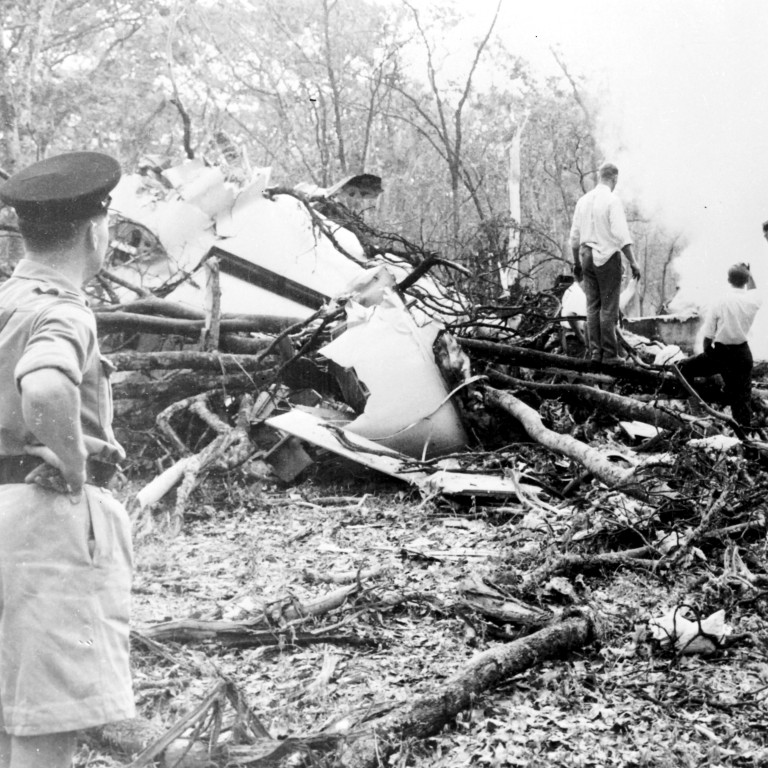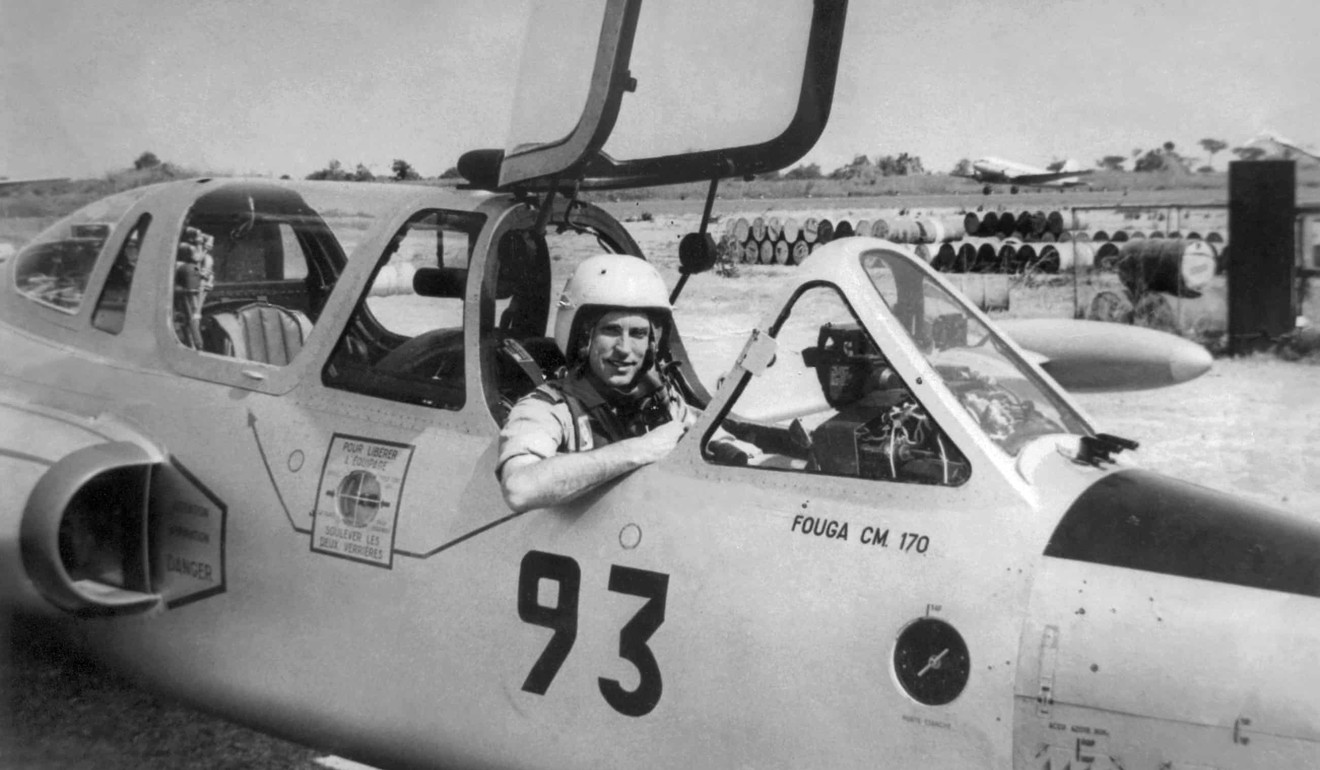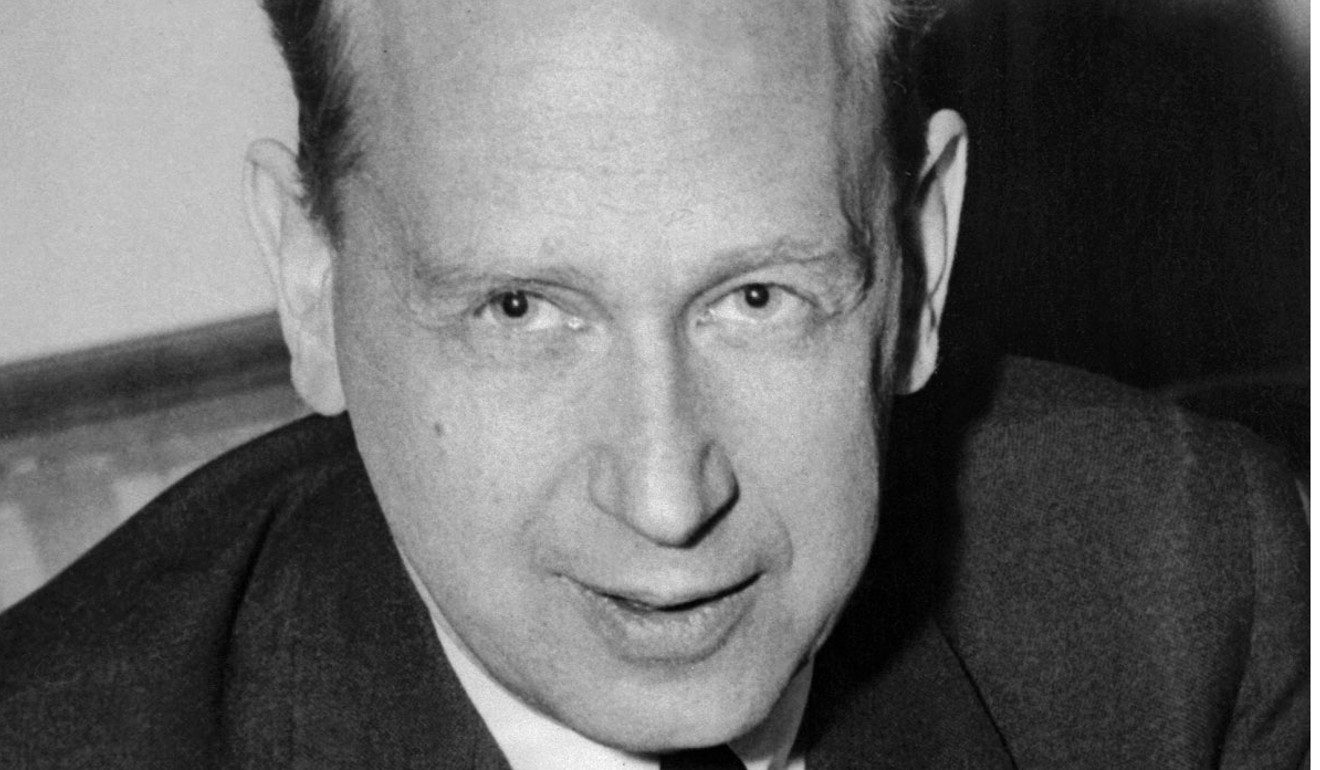
British-trained Belgian mercenary ‘admitted’ shooting down plane of UN secretary general Dag Hammarskjold in 1961
- Cold case documentary casts new light on mystery of Dag Hammarskjold’s plane crash
New evidence has emerged linking a Royal Air Force veteran to the death in 1961 of the UN secretary general Dag Hammarskjold in a mysterious plane crash in southern Africa.
Jan van Risseghem has been named as a possible attacker before, but has always been described simply as a Belgian pilot.
The Observer can now reveal that he had extensive ties to Britain, including a British mother and wife, trained with the RAF and was decorated by Britain for his service in the second world war.
Filmmakers investigating the 1961 crash for a documentary, Cold Case Hammarskjold, have found a friend of Van Risseghem who claimed the pilot confessed to shooting down the UN plane.
They also gathered testimony from another pilot that undermines one of his alibis for that night.
Van Risseghem, whose father was Belgian, escaped occupied Europe at the start of the war to join the resistance in England.
He trained with the RAF and flew missions over Nazi-held areas. During this period he met and married his British wife, cementing a lifelong connection.
At the end of the war the couple returned to Belgium, but by 1961 Van Risseghem was in the Congo, flying for separatist rebels who had declared independence for the breakaway province of Katanga.

There, the documentary claims, he was ordered to shoot down a plane carrying Hammarskjold, who was on a secret midnight journey to try to broker peace. The film will premiere at the Sundance festival in two weeks.
It was not clear at the time of the crash, which also killed all 15 people travelling with the secretary general, if it had been caused by sabotage or was a tragic accident.
More than half a century later the UN is still investigating what happened on September 18, 1961. But as news of Hammarskjold’s death emerged, the RAF veteran was apparently an obvious suspect.
He was named as the possible attacker by the US ambassador to the Congo, in a secret cable sent the day of Hammarskjold’s death and only recently declassified.
For decades, Van Risseghem appeared to have proof that he wasn’t flying in the region on the night Hammarskjold’s plane, the Albertina, came down outside Ndola in Zambia, then called Northern Rhodesia.
Flight logs – meticulous records of where and when he flew – appear to show Van Risseghem was not flying for most of that month, returning to duty only on September 20.
However, Roger Bracco, another mercenary flying for the Katangese, told filmmakers that his colleague’s logbooks are dotted with apparent forgeries.

He does not believe that Van Risseghem shot down Hammarskjold. But when asked in an interview for the film if he considered the logbook a fake, he responds: “I won’t say so, but … I didn’t recognise the story [it told].”
Leafing through the book, he later directly accuses Van Risseghem of forgery.
“This is fake,” Bracco says bluntly of one flight destination, and goes on to add that some of the names listed for co-pilots are not real.
A friend has also come forward to claim that, less than a decade after Hammarskjold’s death, Van Risseghem told him he had attacked the plane.
Pierre Coppens met Van Risseghem in 1965, when he was flying for a parachute training centre in Belgium.
Over several conversations, he claimed, the pilot detailed how he overcame various technical challenges to down the plane, unaware of who was travelling inside.
“He didn’t know,” Coppens said.
“He said ‘I made the mission’ and that’s all. And then I had to go back and save my life’.”
Van Risseghem died in 2007. Surviving relatives, including his widow and niece, say he was not involved in any attack.
His widow told The Observer that he was in Rhodesia negotiating the purchase of a plane for Congolese rebels and the logbooks provide proof that he was not flying for Katanga at the time.
Van Risseghem was never interviewed by the authorities or journalists directly about the death of Hammarskjold, but it is clear that he followed news about it closely. In an interview with an aviation historian Leif Hellstrom in the 1990s, he returns to discuss the crash and details of an official inquiry repeatedly.
He emphasises that he was not in southern Africa at the time it happened, and describes the idea of an attack as “fairy stories”.

